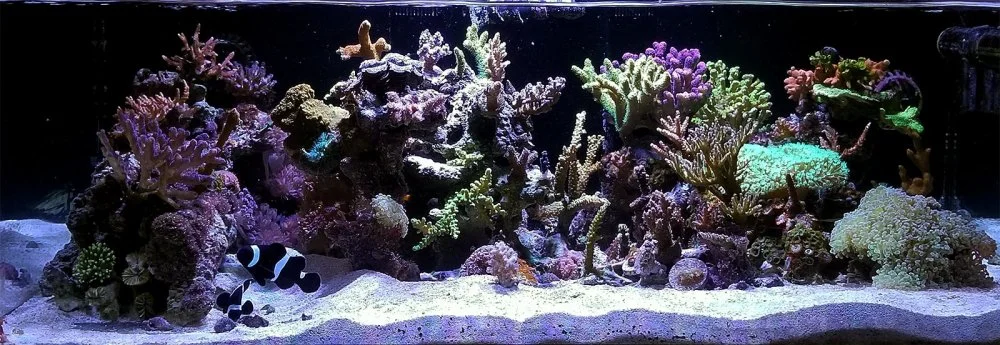Stunning 45-Gallon Reef Tank – cnseekatz's TOTM | NanoReef

Tank Specifications
Volume: 45 Gallons / 170 Liters
Dimensions (L × W × H):
36.0" ×
24.0" ×
12.0"
91.4cm ×
61.0cm ×
30.5cm
Equipment List
- Salt: ESV B-Ionic
Frequently Asked Questions
What are the most important pieces of equipment for maintaining a reef tank?
Key pieces of equipment for maintaining a healthy reef tank include: a high-quality protein skimmer (like the Vertex Omega 130), good lighting (like the Ecotech Radion XR30W Pro), and a reliable filtration system, including UV sterilizers and media reactors. Auto top-off systems (like Autoaqua Smart ATO) also help maintain water levels, while dedicated heaters (such as Eheim 200w) keep water temperature stable.
How should I set up my refugium?
When setting up a refugium, it’s essential to create an environment that supports macroalgae growth. Use a shallow sand bed and live rock as these provide surface area for beneficial bacteria and microfauna. Including various types of macroalgae, such as Mermaid's Fan or Gracilaria sp, helps absorb nutrients. Consider adding filter-feeding corals to enhance nutrient export as well.
What is the ideal flow rate for a 45-gallon reef tank?
For a 45-gallon reef tank, aim for a flow rate of 20-40 times the tank volume per hour. In this case, a combination of a flow pump like Maxspect Gyre XF230, Vortech MP10s, and a return pump should suffice, targeting a setup that creates gentle currents to simulate natural reef environments while providing adequate water oxygenation and nutrient distribution.
How often should I feed my reef tank?
Feeding should be done at least twice per day, with a varied diet that can include frozen mysis, brine shrimp, rotifers, and zooplankton like PE Calanus. Broadcast feeding is effective, and you can supplement with dry pellets or freeze-dried shrimp for an added nutritional boost.
What is an effective water change schedule?
While many experienced keepers suggest frequent water changes (10-20% weekly), the tank owner shared that they follow a more relaxed approach, doing about 10% monthly. Adjust based on your water parameters and tank conditions—if you notice nutrient spikes, consider increasing frequency. Regular testing of parameters can guide your water change needs.
What should be included in a dosing regimen?
A well-rounded dosing regimen should include calcium, alkalinity, magnesium, and possibly amino acids. For example, use ESV B-Ionic Calcium Buffer System for calcium and alkalinity, and a separate solution for magnesium. Monitor levels and adjust dosages based on coral consumption and tank requirements.
How can I introduce new fish to my established tank?
To introduce new fish, it’s essential to quarantine them first for at least two weeks to prevent disease transmission. Slowly acclimate them to your tank's conditions using drip acclimation methods. Monitor the existing residents’ behavior closely, as territorial aggression can arise; introducing more than one fish at a time can help distribute aggression.
What corals are suitable for a novice aquarist?
Soft corals like Pulsing Xenia, Green & White Striped Mushrooms, and Zoas are generally more forgiving for novice aquarists. LPS corals such as Euphyllia species (like Hammer and Torch corals) can also be suitable. Ensure that you research individual coral care requirements as lighting and water flow preferences can vary.
What should I do if I notice cyano or other algae blooms in my tank?
First, assess your nutrient levels and adjust feeding schedules to avoid overfeeding. Increase water flow in affected areas, implement a schedule for regular water changes, and consider using a UV sterilizer or adding a macroalgae refugium to help outcompete algae for nutrients. It's essential to be patient, as manual removal and adjusting conditions can take time.
How can I prevent carpet surfing fish?
To prevent carpet surfing, it is crucial to have a secure lid on the aquarium. Mesh tops can provide adequate ventilation while preventing fish from jumping out. Additionally, choose fish species known for lower jumping tendencies and ensure all escape routes (e.g. gaps) are sealed.